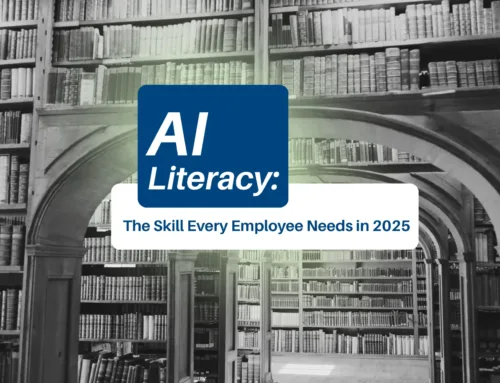Success depends on having the right tools and asking the right questions. AI is powerful, but it doesn’t replace human insight. To get the most from AI, leaders must focus on the human side: curiosity, collaboration, and critical thinking.
This article asks business leaders: What do I do about AI in my organization? The answer starts with better questions.
Why Good Questions Matter
Good questions drive better decisions. They help us:
- Uncover root problems
- Challenge assumptions
- Generate new ideas
But asking good questions isn’t just a skill—it’s a mindset. It comes from experience, diverse perspectives, and a willingness to think beyond the obvious.
10 Question Types for Your Team
Here are ten questions that can sharpen your thinking and improve your outcomes. Each has a time and place—knowing when to use them is as important as knowing what to ask.
- Clarifying Questions
Use when: You need to understand a situation more clearly.
Example: “Can you walk me through what success looks like for this project?”
Avoid when: The answer is already clear or has been repeated.
- “Why” Questions (Root Cause)
Use when: You’re digging into the cause of a problem.
Example: “Why are customers dropping off after the first purchase?”
Avoid when: It may sound accusatory—try “What’s contributing to…” instead.
- Open-Ended Questions
Use when: You want to spark discussion or creativity.
Example: “What other options could we consider?”
Avoid when: You need a quick, specific answer.
- Strategic Questions
Use when: You’re aligning actions with long-term goals.
Example: “How does this initiative support our mission?”
Avoid when: The team isn’t ready for big-picture thinking.
- “What If” Questions
Use when: You’re exploring innovation or risk.
Example: “What if we had to deliver this with half the budget?”
Avoid when: The team needs clarity before brainstorming.
- Reflective Questions
Use when: You’re reviewing a project or learning from experience.
Example: “What would we do differently next time?”
Avoid when: The team is in crisis mode.
- Prioritization Questions
Use when: You’re making trade-offs.
Example: “Which of these goals is most critical this quarter?”
Avoid when: All options are still being explored.
- Stakeholder Questions
Use when: You’re considering impact or buy-in.
Example: “How will this change affect our frontline staff?”
Avoid when: The internal plan isn’t clear yet.
- Risk and Obstacle Questions
Use when: You’re planning or troubleshooting.
Example: “What could prevent us from hitting this milestone?”
Avoid when: The team is in a creative phase.
- Vision and Purpose Questions
Use when: You want to reconnect with the “why.”
Example: “What impact do we want on our customers?”
Avoid when: The team needs tactical direction.
AI’s Confidence Isn’t Always Accuracy
AI can sound sure of itself—even when it’s wrong. That’s why:
- Human oversight is essential
- Critical thinking is non-negotiable
- Verifying sources is a must
Final Thought
AI is a tool. The real power lies in how we use it, which starts with the questions we ask. The future belongs to organizations that combine innovative technology with wise leadership.
Let’s keep asking better questions—together.
Let’s Talk Strategy
If you’re thinking about bringing AI into your organization—or how to rethink your tech strategy—we’re here to help. From planning to implementation to support, we partner with leaders to build smarter, more resilient organizations.
Reach out to start the conversation.
Innovative Solutions. Practical Software. Friendly Support.
Schedule a call | View Upcoming Events | Access our TechHouse Library of Articles




